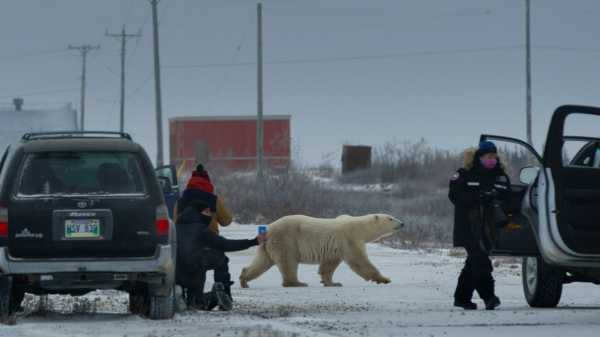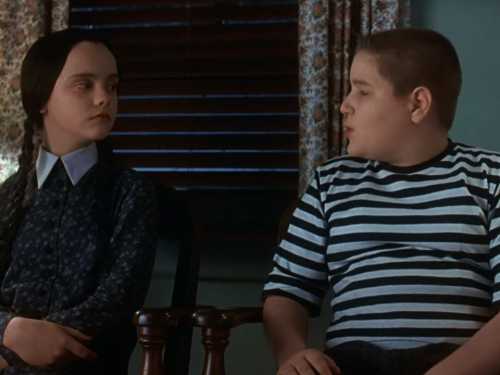
In “Nuisance Bear,” the bears share space with the people who’ve come to see them, walking cautiously between parked vehicles, being watched and watching back.
What’s a nature program without narration? The genre relies heavily on voice-overs to bridge the gap between the dramas unfolding in the plant and animal kingdoms and the humans who want to understand them. If you’re lucky, the voice is dulcet and expressive—David Attenborough pouring forth such reverence that the jungle seems like a chapel, Morgan Freeman or Sigourney Weaver lending theatricality to the life of a penguin or a whale. But what happens when there is no voice-over, and viewers are left to piece together an animal’s story on their own, as they might have to in the actual outdoors?
This is the challenge that the filmmakers Jack Weisman and Gabriela Osio Vanden set for themselves in “Nuisance Bear,” a short documentary that they shot in the town of Churchill, Manitoba, where travellers arrive in droves every autumn to see polar bears migrating as sea ice begins to form on the Hudson Bay. The footage in “Nuisance Bear” reveals as much about the behavior of the humans as that of the bears. Scrums of wilderness paparazzi gather at the sides of the roads, shooting smartphone photos from their positions crouched beside a parked S.U.V. or wedged behind an open car door. It’s quiet—the only sounds are the crunch of a bear’s steps and the overlapping whirs of digital-camera shutters.
The New Yorker Documentary
View the latest or submit your own film.

The bears, for their part, are worth the trip: white giants loping over the tundra with loose-limbed power, or, closer to town, creeping to investigate the foraging possibilities in a collection of garbage cans. We’re used to seeing images of such charismatic fauna captured farther away from human turf—or edited to appear that way. So it’s especially striking to see these bears sharing a frame with a traffic sign, sharing space with the people who’ve come to see them, walking cautiously between parked vehicles, being watched and watching back.
Weisman and Osio Vanden knew from the outset that they didn’t want to include narration or music in their film. “We felt like it’s so easy to manipulate the audience’s emotions,” Weisman told me. “And so we were curious: Can we make it an experiment—a challenge to ourselves as artists and filmmakers—to tell this narrative and have people really feel engaged without those elements?” Another pivotal moment came during the filming, when they decided to mount a camera on their car, at the eye level of the bears. “It was important for us to maintain that animal’s perspective,” Osio Vanden said. The result is a bear’s-eye view of the town. The clusters of humans are obstacles between hunting grounds; the municipal dump is a constant temptation, a frustratingly walled paradise where smaller creatures such as foxes and ravens can sneak in and easily feast. The action comes to a surprising and visually stunning head when one bear can no longer resist the siren song of Churchill’s trash. The result is a bizarre human-animal encounter that is bound to raise all kinds of logistical and ethical questions. And the film leaves viewers to puzzle out its meaning on their own.
The coexistence of humans and wildlife is always fraught—climate change and habitat encroachment make it even more so. Just as they wanted to push on the conventions of the nature doc, the makers of “Nuisance Bear” also wanted to avoid the didacticism of the issue film. They don’t take a position on whether one should join a tour expedition to photograph polar bears, or how best to manage them when they come hungrily into town. Weisman said that, before making the film, he thought of polar bears as helpless victims, a species doomed by the climate collapse. “But I think there’s another important part of this story that’s not fully written yet,” he told me. “Bears are, like all animals are, super intelligent, and they’re adapting.” The film shows these human-adjacent bears in a different light: not majestic predators on long hunting dives beneath the ice floes, not starving waifs already sacrificed to the warming future, but simply animals, wary and scrappy, eying a chain-link fence at the edge of town, determined to survive.
Sourse: newyorker.com






